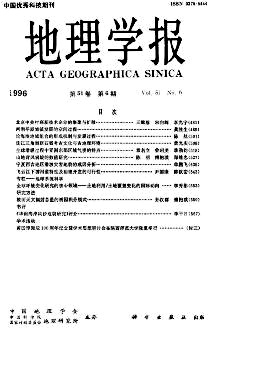Li Bingyuan, Li Juzhang, Wang Jianjun
By analyzing disaster forming mechanism.natural hazards in China can be divided into 20 basic types according to direct factors causing disasters, in which drought, waterlogging, flood, earthquake, landslide and debris are the most serious in China.The macrolandform,especially the three grand relief terraces in China, and the macrolandform-dominated regionalization of natural environment affect the distribution of flood, waterlogging, landslide, debris and earthquake.The difference in natural hazard distribution can reflect the regularities of areal association of natural hazards. The regionalization of disasters should abide by not only geographic principles, but also the principles of similarity and difference in the main types of natural hazards. By analyzing the areal differentiation of Chinese main natural hazards and the intensity of factors inducing disasters based on the Chinese data bases of intensities of the main factors inducing disasters and the data bases of social environment, and using ARC/INFO GIS. the authors compiled distribution maps of Chinese main natural hazards and maps of intensity of factors inducing disasters. Results show that Chinese natural hazards can be divided into 3 regions and 12 subregions.I. Severe hazard region in monsoon plain and mountain in east China This region is located west of seas and controlled by monsoon. The intensity and frequency of drought, waterlogging and flood in the area are the highest in China under the influences of abnormality of monsoon, typhoon and cold wave, and exclusive hazards of oceanic genesis appear here.Microtherm, earthquake, landslide and debris are serious. The area includes seven subregions: I1 Moderate hazard subregion of waterlogging. flood, microtherm and biological hazards in northeast China; I2 Severe hazard subregion of drought. waterlogging. flood and earthquake in the plain in east China. I3 Severe hazard subregion of waterlogging. flood and draught in the middle Changjing River, I4 Severe hazard subregion of waterlogging, flood, drought and earthquake in the southeast coastal area; I5 Severe and moderate hazard subregion of drought, soil erosion and earthquake in the Loess Plateau; I6 Severe hazard subregion of drought, waterlogging, flood, landslide and debris in Sichuan, Guizhou, Hunan and west Hubei; I7 Severe hazard subregion of earthquake. landslide and debris in Yunnan and west Sichuan.Ⅱ. Moderate hazard region in mountain and basin in dry northwest China This area lies in the inland with dry climate, strong wind and frequent sandstorm. and there is no rainfed agriculture. The main natural hazards are earthquake. flood, drought and windstorm.The area includes three subregions: Ⅱ1 Moderate and slight hazard subregion of drought, heavy snow and forest fire in Inner Mongolia: Ⅱ2 Moderate hazard subregion of earthquake, sandstorm,flood and drought in Xingjiang and Gansu; Ⅱ3 Moderate hazard subregion of earthquake. landslide and debris in the Tianshan Mt. in Xinjian Ⅲ. Slight hazard region in the cold Qinghai-Tibet Plateau Tectonic movement in the region is strong. Earthquake, collapse. debris and heavy snow are intense, but the losses population. This region includes two subregions: Ⅲ1 Moderate hazard subregion of earthquake, landslide and debris in the southeast Qinghai-Tibet Plateau; Ⅲ2 Slight hazard subregion of earthquake and heavy snow in the northwest Qinghai-Tibet Plateau.
